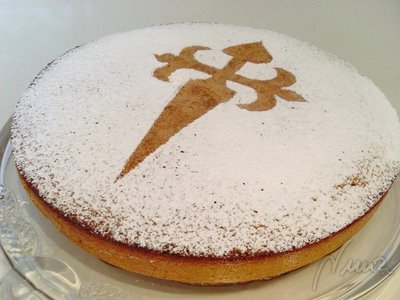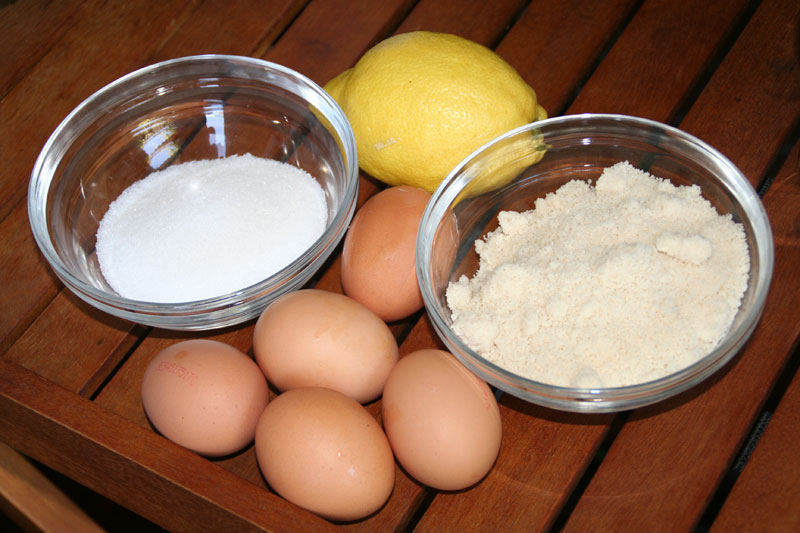
Origin: Galicia

Tarta de Santiago -Santiago cake- is typical of the gastronomy from Galicia that you would read about in your Spanish guide, however it is consumed in the entire country. It's main ingredient is crushed almonds.
We don't have much information about the consumption of almonds in Galicia in medieval times, so we don't know exactly when or how it began, but the first documented reference dates back to 1577 when Pedro de Porto Carrero visited University of Santiago. It was a similar recipe but the name was different, it was called torta real, which means royal cake (if you would like to learn Spanish in Spain, we recommend a course abroad).
The first reliable recipe appeared in the 19th century, from the confectionery notes of Luis Bartolomé de Leybar. In these notes it was called Tarta de Almendras (almond cake), however historians believe that the torta de santiago actually has a much older past, as there are multiple variants whose recipes were most certainly passed from mothers to daughters for generations.
However it seems like it wasn't until the 20th century that tarta de santiago gained notoriousness outside of Galicia. During this century the Galician cake slowly begins to appear in Spanish gastronomic treaties where it's qualified as a traditional Galician gastronomy dessert. It also gained fame thanks to Saint James' Way, which is the pilgramage to the cathedral of Santiago de Compostela. The pilgrims on this route must have appreciated a slice of this tasty Spanish cake after their long journey and will have probably gone home and told their family and friends about it, hence spreading the fame of the cake. To this day, the cake is most commonly eaten throughout the month of July as well as the first week of August as the Santiago the Apostle's day is celebrated on the 25th of July.
The cross that decorates its surface didn't appear until 1924, when Jose Mora Soto from Santiago de Compostela decorated his cakes with the silhouette of Saint James' cross (also known as Santiago cross). According to his descendants, he was looking to give the traditional product a different touch.
This idea was highly successful and he was soon emulated by other Compostelan pastrycooks and not much longer after that, the decoration spread throughout the whole of Galicia. Since the year of 2006 and up to the present day, the tarta de Santiago has been protected by a designation of origin.
This cake is great for serving with a typically Spanish style café con leche (or coffee with milk) and is therefore great for afternoon tea. But of course, it also makes the perfect end to any Spanish meal. It is often consumed as a pudding accompanied by a glass of sweet wine or a dessert wine.

Ingredients:
Preparation: